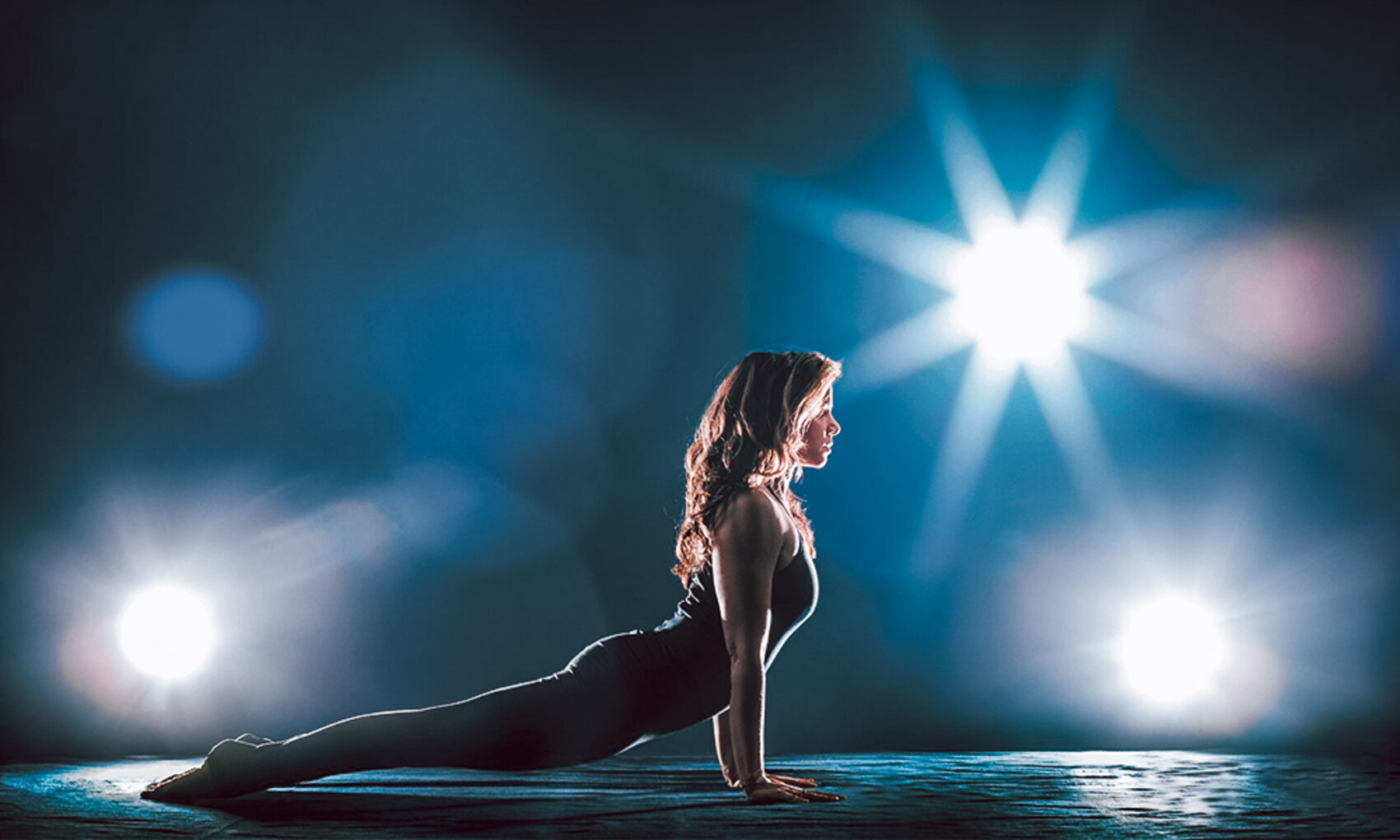urdhva or adho mukha śvānāsana

The difference between urdhva and adho mukha śvānāsana
The upward-facing dog and the downward-facing dog are the two dog poses commonly used in yoga classes, especially those that employ vinyasa to link postures.
In the vinyasa tradition of Pattabhi Jois, these two postures are featured predominantly in the sun salutations, which open the practice and in the transitions between the poses of the various series. Indeed, the downward-facing dog seems almost to have become as much a symbol of yoga as sitting in lotus.
Many people, however, get the Sanskrit names of these two postures confused, whether it is with each other or with some different well-known poses. So how do we remember which is which?
Urdhva versus Adho

Upward and downward-facing dog shares two common words… Mukha, which means ‘mouth’ but is more commonly translated in the yoga world as ‘face,’ and Avan (pronounced ‘shvun’), which means ‘dog’. Once we know those, all we need to remember are the words for ‘upward’ and ‘downward,’ which are respectively Urdhva and Adho (pronounced ‘udho’). Strictly speaking, the precise form of these words is influenced by the phrase placed after them. We also need to remember which is which, so here is a simple mnemonic: I think of the backbend shape of the upward facing dog is analogous to the body of the letter ‘u’ for Urdhva, and the roughly triangular shape of the downward-facing variety, as comparable to a capital ‘A’, as in Adho.
Get it?
So, when we put the pieces together, we have Urdhva (upward) Mukha (mouth or face) Asana (dog posture), and Adho (downward) Mukha (mouth or face) Asana (dog posture)—as with any language that we learn, getting our heads around keywords in this way can help to put the Sanskrit jigsaw puzzle together. Urdhva in front of Hastasana or Dhanurasana at least means something upward.
For example, Adho Mukha Vakasana, literally ‘downward facing tree’, gives us a hint towards the more commonly used name of this posture – handstand.
Adho versus Ardha
However, there is still a risk of confusion because there is another Sanskrit word, which often gets thrown into the mix by mistake, Ardha, which means ‘half’. We see this word probably most commonly in Ardha Candrasana, the half-moon posture, or in Ardha Matsyendrasana, the well known seated twist. But as a teacher of Sanskrit posture names, I am surprised at how often I see Ardha (or the more grammatically accurate Ardho) Mukha Avanasana turn up, in other words, the ‘half-faced dog’.
Now, I am as keen on animal welfare as the next yogi, and all these dogs with only half a face trouble me. So, how can we help them? Here, I have to pretend that I am a caricature Londoner, even though I am not, and drop my initial ‘h’ from the word ‘half’… pronouncing it something like ‘arf’. I then need to make the association between ‘arf’ and ‘Ardha’, and I should be home, and dry… and all those dogs will be saved.
So to sum up
Think of the backbend shape of the upward facing dog as like a letter ‘u,’ and you will remember Urdhva Mukha śvānāsana. Think of the form of the downward-facing dog as like a capital ‘A’ and you will remember Adho Mukha śvānāsana
Remember that Ardha is like ‘arf’ and you won’t mix it up with Adho and apply it to your dogs… or at least you wouldn’t if only cartoon dogs weren’t so often shown making the sound ‘arf, arf’…
Ultimately let’s also remember to keep things in perspective. Far more important than what you call these postures, you get on your mat and practice them!
Note: This article is the sixth in a series of articles considering Sanskrit faux pas. Check out the other five – It’s not the crow!, Varabhadra doesn’t mean warrior, Do you know how to pronounce haá¹ha?, Astanga, Siva, chakras, and caturanga: what about the ‘h’? and Parivatta: revolved or reverse?